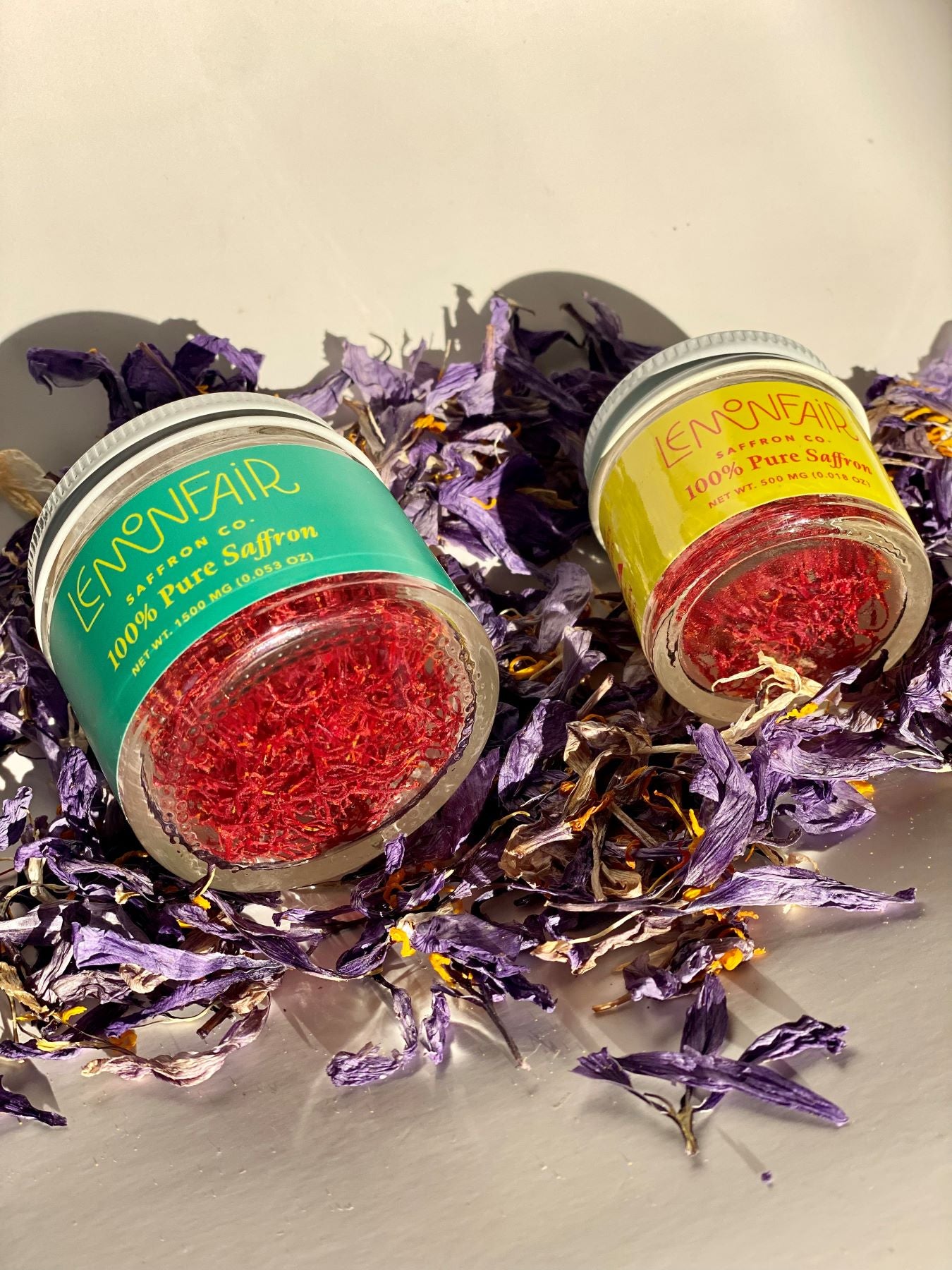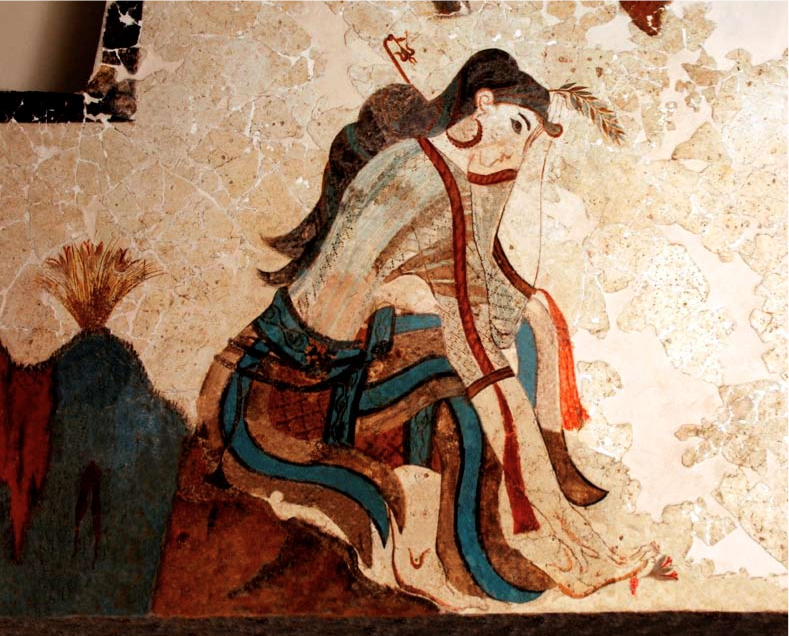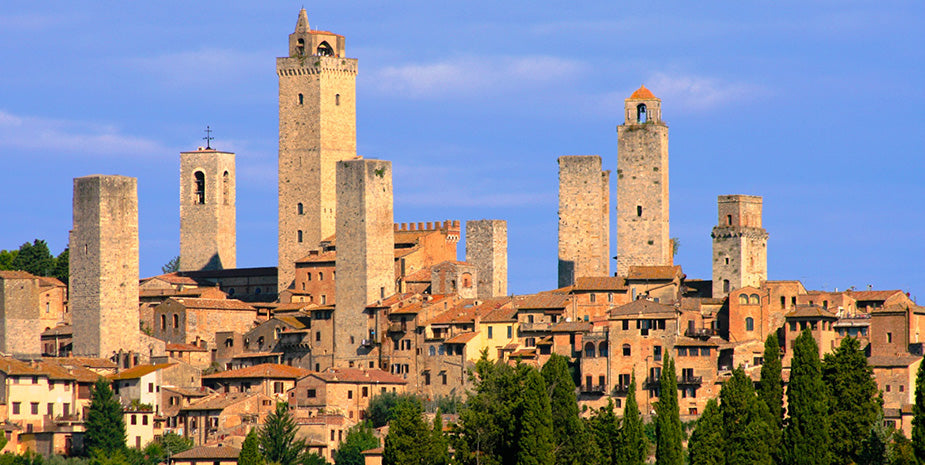
Saffron’s History
Even Cleopatra Loved Saffron
Societies have cultivated saffron for over 3,000 years, starting with ancient civilizations who treasured the spice for its color and medicinal benefits. Over the course of history, from Minoan society, to the Italian Middle Ages, to the present day, society has continued to explore innovative and beautiful ways to harness the power of the golden spice.

Minoan Society
Saffron’s Origins
It is still unknown precisely where saffron was first domesticated. Crete, Central Asia, Iran, even Kashmir, have been speculated places of origin. However, botanical research suggests its origin being Greece and Crete, and the oldest evidence of saffron being used is depicted in Minoan society. Earthenware pots from the Minoans show the crocus’s images. Frescoes in palaces on Crete depict a goddess offered saffron as a sacrifice, women and monkeys harvesting the crocus and a woman coloring her lips using saffron. The image shown here depicts a woman using saffron to treat her bleeding foot. Experts believe saffron played a vital role in the Minoan religion. Saffron played a role in many other religions. In the Hebrew Bible, saffron is hailed for its sweet smell, alongside pomegranates and cinnamon. In Persia, saffron was cultivated in the 10th century BCE. It was used as a ritual offering to deities, as well as a dye, perfume, and medicine.
Cleopatra to Zeus
Famous Figures
The importance of saffron is highlighted in its use by many historical figures and cultures. Cleopatra prized saffron for its beautifying properties, using it in baths to enhance her allure. Alexander the Great treated his battle wounds with saffron, taking advantage of saffron’s antimicrobial properties. Greek mythology discusses the origin of saffron and the saffron pistils are also part of Zeus’s cloud bed, as described in the Iliad.
University of Vermont presentation on history and cultivation around the world.

Development Continues
Saffron Today
Today 90% of the world’s saffron is grown in Iran. Other major growing regions include: Spain, Italy, Kashmir, Afghanistan, & India. Because saffron is the world’s most expensive spice by weight, it is also one of the most adulterated. You may be familiar with the wonderful, traditional uses of saffron (paella, bouillabaisse, tahdig, lassi…) and a new generation of chefs are continuously finding novel uses for the spice.

Red Gold
Italian Saffron
Lemonfair’s drying process is based in the traditional methods of Tuscany, whose growing climate is similar to that of Vermont and colder than most other saffron growing regions.
Italy’s rich history of saffron cultivation dates back to ancient times. After the fall of the Roman Empire, saffron cultivation in the region steeply declined.
Saffron returned to Italy during the Middle Ages, spreading to several regions, including Tuscany. Its arrival sparked a lucrative trade, centered in the city of San Gimignano. Families grew incredibly wealthy and began constructing the famous San Gimignano towers.
At one time, there were 72 towers in San Gimignano. Today, 13 remain, and the town is a UNESCO World Heritage site.
A seemingly simple spice with such a rich and fascinating history. From ancient times to medieval Italy and beyond, saffron has left an indelible mark on Italian culture and cuisine. It is no wonder saffron is known as “red gold.”
